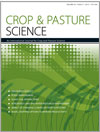Many soils have intrinsically low concentrations of available phosphorus (P), which is a major limitation to crop and pasture growth. Regular applications of P have underpinned agricultural productivity internationally, and fertiliser use now constitutes one of the largest variable input costs to farming. Globally, high-quality reserves of P are being depleted and price increases are likely in the future. In addition, the effects of P pollution on water quality are attracting legislative regulation. Hence, there is a need to improve P-use efficiency (PUE) in farming systems.
Progress in improving PUE has been limited for several reasons, including: inconsistent definitions of PUE, inappropriate phenotyping, incomplete understanding of the controls of P uptake, lack of field validation, and little consideration of genotype × environment interactions that affect the expression of PUE. With greater consideration of these limitations, the powerful array of molecular and genomic tools currently available promises considerable advances in developing more P-efficient crops. Stronger interaction between molecular science and the traditional disciplines of plant breeding, crop physiology, soil science, and agronomy will allow new opportunities to study genetic differences in PUE, bringing P-efficient crops closer to reality.





